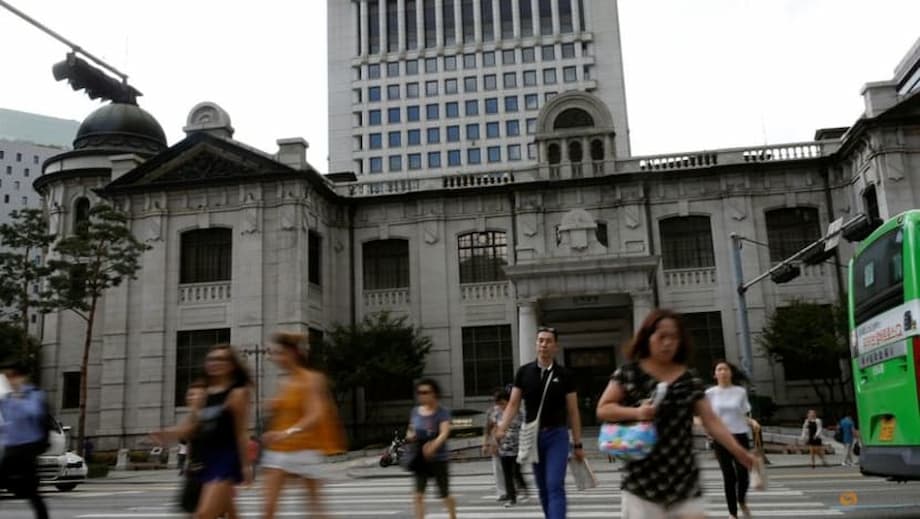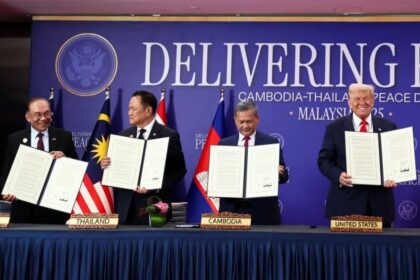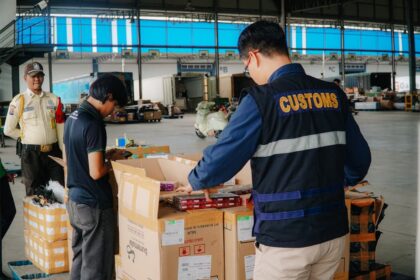South Korea Faces Economic Shock as US Tariffs Reshape Global Trade
South Korea, Asia’s fourth-largest economy and a global export powerhouse, is bracing for a significant economic shock after the United States imposed sweeping new tariffs on its exports. Despite a last-minute trade deal that softened the blow, the average US tariff on South Korean goods has jumped from zero to 15 percent, ending years of tariff-free trade under the Korea-US Free Trade Agreement (KORUS). The Bank of Korea (BOK) and leading economists warn that these measures will dampen growth, disrupt industries, and reverberate through the global economy.
- South Korea Faces Economic Shock as US Tariffs Reshape Global Trade
- How Did US Tariffs on South Korea Change?
- Economic Impact: Growth, Inflation, and Industry Fallout
- Why Did the US Impose New Tariffs?
- Global Ripple Effects: Trade Wars and Retaliation
- Broader Implications: Lessons from the Trade War
- In Summary
How Did US Tariffs on South Korea Change?
Since returning to office, President Donald Trump has unleashed a new wave of tariffs targeting dozens of countries. South Korea, which had previously enjoyed zero tariffs on most exports to the US, now faces a 15 percent blanket tariff on its goods. This is a sharp increase compared to the baseline 10 percent tariff now applied to most US trading partners, and it is significantly higher than the rates South Korea faced before Trump’s latest trade policies.
According to the Bank of Korea, the new tariffs are the result of tough negotiations. In late July, Seoul reached a deal with Washington that set the US tariff on South Korean imports at 15 percent—lower than the earlier threat of 25 percent, but still a steep rise from the previous regime. The BOK notes that, compared to 50 major exporters to the US, South Korea received the ninth-largest tariff cut relative to initial threats, but still ended up with higher tariffs than more than half of its peers, including Japan and the European Union.
South Korea’s vulnerability stems from its heavy reliance on US-bound exports, especially in automobiles, steel, semiconductors, and machinery. The country’s previous free trade agreement with the US had made it particularly exposed to product-specific duties, which have now been replaced by broad-based tariffs affecting nearly all sectors.
Economic Impact: Growth, Inflation, and Industry Fallout
The Bank of Korea projects that the new US tariffs will shave 0.45 percentage points off South Korea’s economic growth this year and 0.60 percentage points in 2026. The central bank has revised its annual growth forecasts to just 0.9 percent for 2025 and 1.6 percent for 2026, marking the slowest expansion since the pandemic. Consumer inflation is also expected to be dampened by 0.15 percentage points this year and 0.25 points next year, as higher tariffs reduce demand for exports and imported goods become more expensive.
Automobiles are at the epicenter of the shock. South Korean automakers like Hyundai, Kia, and GM Korea have built their US market presence over decades, with passenger vehicles accounting for nearly half of Korea’s total automobile export revenue. In 2024, Hyundai, Genesis, and Kia sold about 1.7 million vehicles in the US, with 700,000 produced domestically and the rest exported from Korea and Mexico. The new 25 percent tariff on autos and parts, announced alongside the broader 15 percent tariff, threatens to erode Korea’s competitive edge and disrupt global supply chains.
Hyundai and Kia, for example, source a significant portion of their parts from the US and Canada, and have recently invested billions in US manufacturing. Yet, the tariffs increase costs for both imported vehicles and components, putting pressure on profit margins and potentially raising prices for American consumers. GM Korea, which exports 85 percent of its output to the US, faces existential risks as higher entry barriers threaten its future. The Korean government has responded with a KRW 3 trillion aid package for the auto sector, but industry leaders warn that jobs and investment are at stake.
Other sectors are also feeling the pain. Semiconductors, steel, and electronics—key pillars of South Korea’s export economy—are all subject to new US duties. The disruption is not limited to direct exports: South Korean firms with manufacturing bases in Vietnam and other Asian countries are also affected, as the US has imposed high tariffs on goods from those countries as well.
Financial Markets and Policy Response
The shockwaves from the tariffs have rattled South Korean financial markets. Hyundai’s stock price dropped nearly 13 percent after the tariff announcement, contributing to a 5.2 percent decline in the KOSPI index. The Bank of Korea has held its benchmark interest rate steady at 2.50 percent, signaling a cautious approach amid mounting economic headwinds. Governor Rhee Chang-yong has indicated that further monetary easing may be necessary if growth remains weak, but warned against adding excessive liquidity to an already overheated housing market.
Exports surged temporarily in July as companies rushed to ship goods before the tariffs took effect, but analysts expect a slowdown in the coming months. The government is preparing additional support measures for affected industries, and officials are engaged in ongoing negotiations with Washington to seek further relief.
Why Did the US Impose New Tariffs?
President Trump’s rationale for the tariffs is rooted in his “America First” trade agenda. He argues that tariffs will boost US manufacturing, protect American jobs, and reduce the trade deficit by making foreign goods more expensive. The administration claims that the tariffs will generate hundreds of billions of dollars in revenue and encourage foreign companies to invest in the US.
However, economists and business leaders warn that the real impact is more complicated. Tariffs are essentially taxes on imported goods, and the costs are often passed on to US consumers and manufacturers. This can lead to higher prices, reduced competitiveness, and slower economic growth. As the BBC explains, tariffs are typically a percentage of a product’s value, and companies may choose to absorb the cost, raise prices, or import fewer goods.
Trump’s tariff strategy has also been marked by volatility and unpredictability. Many tariffs have been announced, amended, delayed, or cancelled, creating uncertainty for businesses and investors. The administration has used tariffs as leverage in trade negotiations, demanding concessions from partners in exchange for lower rates. In South Korea’s case, the 15 percent tariff was the result of intense bargaining, but it still represents a significant departure from the previous free trade regime.
Global Ripple Effects: Trade Wars and Retaliation
The US tariffs on South Korea are part of a broader global trade conflict. Trump has imposed tariffs of 10 to 50 percent on dozens of countries, including allies like Japan, the European Union, and the Philippines. Some countries, such as Brazil and India, have announced retaliatory measures, while others have sought to negotiate exemptions or concessions.
The European Union, for example, has proposed removing all tariffs on imported US industrial goods in exchange for the removal of US duties on European cars. Mexico has joined the US in raising tariffs on Chinese goods, while Vietnam and other Asian countries are caught in the crossfire. The end of the $800 duty-free loophole for small imported packages means that even low-value goods now face tariffs of 10 to 50 percent.
These moves are reshaping global supply chains and forcing companies to rethink their sourcing and investment strategies. Some firms are relocating production to the US to avoid tariffs, while others are seeking new markets or absorbing higher costs. The International Monetary Fund and the Organization for Economic Co-operation and Development have both downgraded their forecasts for global economic growth in 2025, citing the impact of tariffs and trade uncertainty.
Regional Responses and Diplomatic Efforts
South Korea is not alone in facing the fallout from US tariffs. Finance and central bank officials from China, Japan, South Korea, and Southeast Asian nations have met to discuss the impact on the regional economy and to coordinate policy responses. The focus is on strengthening financial safety nets, deepening regional cooperation, and supporting economic recovery amid global uncertainty.
South Korea’s acting President Han Duck-soo has called for talks with US officials to protect the export-driven economy and ordered emergency support for affected businesses. Industry Minister Ahn Duk-geun described the tariffs as “regrettable” but emphasized the need for continued consultation and negotiation. Analysts suggest that South Korea may offer concessions, such as increasing imports of US goods or boosting military spending, to secure further relief.
Meanwhile, the legal status of some US tariffs remains in flux. US courts are reviewing challenges to the administration’s use of emergency powers to impose tariffs, and a Supreme Court appeal is possible. The outcome could determine whether the tariffs remain in place or are rolled back in the future.
Broader Implications: Lessons from the Trade War
The South Korean experience highlights the broader risks and unintended consequences of protectionist trade policies. While the US aims to strengthen its manufacturing base and reduce its trade deficit, the reality is that tariffs often raise prices for consumers, disrupt supply chains, and slow economic growth on both sides of the border.
Economists note that the inflationary impact of the tariffs has so far been muted, partly because exporters rushed to ship goods before the new rates took effect and some companies have absorbed the costs. However, the full effects may take time to materialize. The Yale Budget Lab estimates that tariffs will cause US consumer prices to rise by 1.8 percent this year, and the average US tariff rate is now at its highest since 1934.
For South Korea, the stakes are especially high. The country’s export-led growth model depends on open access to global markets, and the US is its second-largest trading partner. The new tariffs threaten to undermine decades of economic integration and could force Korean firms to accelerate their push into new markets or invest more heavily in US-based production.
The situation also underscores the fragility of international alliances in an era of economic nationalism. As seen in the Philippines and other US allies, high tariffs can strain diplomatic ties and erode trust, especially when they are imposed unilaterally or used as bargaining chips in broader geopolitical disputes.
In Summary
- South Korea faces a significant economic shock after the US imposed a 15 percent tariff on its exports, ending years of tariff-free trade under KORUS.
- The Bank of Korea projects that the tariffs will reduce South Korea’s economic growth by 0.45 percentage points this year and 0.60 points next year.
- Key industries like automobiles, steel, and semiconductors are especially vulnerable, with potential job losses and investment risks.
- The Korean government has responded with emergency support measures and ongoing negotiations with Washington.
- US tariffs are part of a broader global trade conflict, with ripple effects across supply chains, financial markets, and diplomatic relations.
- Economists warn that tariffs raise prices, disrupt trade, and slow growth, with the full impact likely to unfold over time.
- South Korea and its regional partners are coordinating policy responses to mitigate the fallout and strengthen economic resilience.












